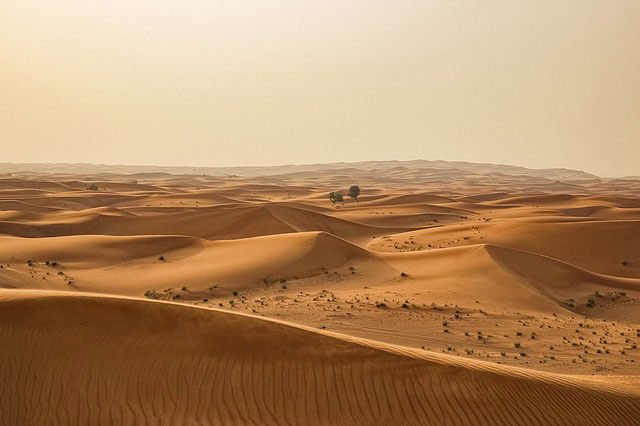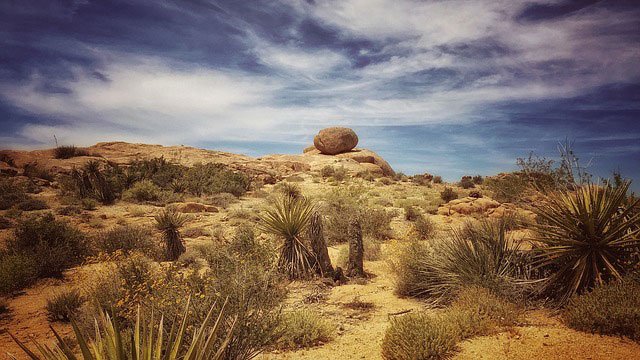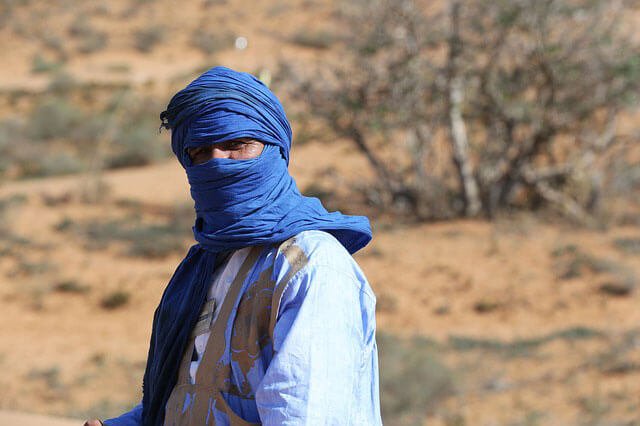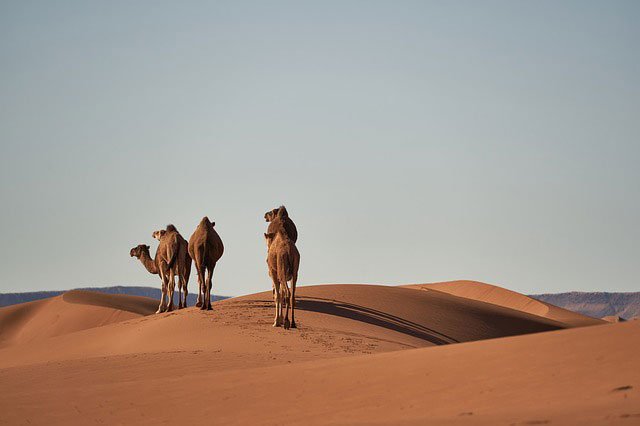We’ve all read about the Sahara desert in our school books and needless to say, it doesn’t really interest anyone. It’s whole lotta sand, big deal?
Actually, yes. It is a big deal. The Sahara desert is the largest hot desert in the world. Antarctica is the world’s largest cold desert. It isn’t just sand, the Sahara desert houses many different kinds of flora and fauna that is unique to this place only. You won’t find it anywhere else. Not only that but life at a desert is something to be seen as well. You must experience it at least once in your lifetime. It will contribute greatly to your perception of life, death, humans and what really matters. With that said, here are a few things you should know about before visiting this grand expanse of sand.
Let’s start with Geography

Although the majority of the Sahara desert comprises of sand dunes, it still has a varied topography. The Sahara desert covers almost 10%of the African Continent and stretches across more than ten countries, i.e. Egypt, Libya, Chad, Mali, Tunisia, Algeria, Morocco, Niger, Mauritania, Sudan, and Western Sahara. That is roughly 9,000,000 square kilometers of land.
Towards its north, you’ll find the Mediterranean sea and towards the south, theirs is a semi-arid tropical savanna. To its east, you’ll encounter the Red sea and to the west, you’ll find the Atlantic Ocean.
Apart from the sand dunes that cover 25% of the desert and go over 500 feet in height, there are mountain ranges, volcanos, salt flats, dry valleys, oasis, underwater aquifers, and a large river. Nile River is the only permanent source of water the Sahara desert has. The highest point here is the volcanic peak Emi Koussai that reaches 11,204 ft in height while the lowest point here is the Qattara Depression in Egypt that goes -436 feet below sea level.
What’s the Climate like
According to a research posted in the journal Science Advances in 2019, some 20,000 years ago, the Sahara desert was a meadow filled with lush green plants, exotic flowers and home to a large variety of insects and animals. And it will transform into the same oasis about twenty thousand years from now. This mysterious and magnificent alteration is due to the monsoon cycle and the slight tilt of Earth’s axis.
Right now, the Sahara is in its dry period. The climate, therefore, corresponds to that. The average temperature is the Sahara desert is around 33°C (91° Fahrenheit). However, it can reach as much as 50°C, with 58°C the highest temperature ever recorded in the Sahara desert. Interestingly, the nights here can be pretty cold and temperature can drop below freezing point. So if you were planning a trip here, make sure to pack adequately!
Curious about what kind of Wildlife you can find here?
Most people think camels are the only animal life found in the Sahara desert. And while camels are most suited for life in this kind of arid ecosystem, they are not alone. According to the Sahara Conservation Fund, there are about 70 different animal species found here. Majority of them are mammals hyenas, cheetahs, desert foxes, and wild dogs, etc. In addition to that, you can also see reptiles and arthropods. The most common being lizards, snakes, beetles, crocodiles, and scorpions.
Types of Plants in the Sahara Desert

Although plant life is very scaring throughout the land, it is still bigger than animal life. According to research, you can see more than 500 different species of plants in the Sahara desert. They are abundant in places with more water such as the Nile river. Since the plant species have adapted themselves to survive by extending their roots deep underground and reducing the surface area of the leaves to eliminate water loss due to transpiration, their lifetime is pretty long. Day palms and olive trees are the only actual fruit plants found here. The rest are various kinds of shrubs and grasses but if you’re dying of thirst, don’t hesitate to eat a cactus. They’re rich in fluids and very hydrating. Just make sure to peel off the thrones first!
The Uniqueness of its People and Culture

If you think, Sahara is unlivable, you’re wrong. According to an estimation, around 4 million people live in the Sahara desert. They are mostly nomads and constantly move from one place to another. Due to its vastness, multiple tribes from difference nations inhabit the place. They all speak various languages but Arabic is the most spoken one.
You might think how would an arid and dry place like the Sahara desert come to be inhabited. And what kind of people were they? The answer is not clear. Archeologists have found traces of life when it was still a lush oasis, so really, who are even the first people? However, it is believed that people started living in the dry and hot Sahara around 6000 BCE. These people were major Arabs, Egyptian, Phoenicians, and Greeks.
Apart from the nomads, people also live in cities and towns.
The presence of ores like iron and copper became the source of livelihood for its people when the mining industry took off. It is mostly based in Algeria, Egypt, Mauritania, Western Sahara, and Libya. Tourism, I suspect, is also a breast source of income for these nations. Every year, a large number of tourists go to visit this enchanting place to experience the life of a desert. The culture and traditions of this place are unprecedented that you won’t find anywhere else in the world.
Fun Things you can do here
Activities in a desert are not limited to riding a camel, as opposed to popular belief. There are other things you can do here to make your trip more fun.
- Surfing the Sand – sea waves are not the only thing you can surf. Sand surfing is a popular sport in the desert that you can enjoy.
- Riding a Quad bike – you can also ride a heavy-duty quad bike and race on the sand.
- Hot air balloon rides – enjoy the full view of the majestic mountains and the vast sand from the hot air balloon.
- Camping – or you can simply camp around a fire and listen to bewitching stories from the natives.
- Stargazing – don’t forget to behold the most mesmerizing sight of your lifetime! Due to zero light pollution in the desert, you can see the stars in all their glory. This is a heaven for people who love the stars and space!
Changes that are occurring in the Sahara Desert
Global warming is increasing and just the rest of the world, it is altering the climate of the Sahara Desert as well. According to a recent study published in the Journey of Climate, the Sahara Desert has expanded almost 10% in the past few years. That is a cause for concerns because unlike all deserts that expand in the dry season and shrink in the wet season, the expansion of Sahara desert is mainly because of man-made changes. Man’s activities are causing pollution and disrupt natural cycles. If this goes on, the Sahara can expand even more and may swallow the whole continent.
Soon, the temperature may rise to an unseen high, which needless to say, is going to wreak havoc in the desert. It affects, not only the people living there but also the plant and animal life. According to research, a number of species have already gone extinct and a lot are endangered. If nothing is done about it, the whole ecosystem of the Earth will suffer. Fortunately, a lot of people have realized this and have come up with propositions to reduce this impact or use it for our advantage. Unfortunately, these plans are years behind actual execution. Global awareness of this issue should be raised.
Some Interesting Facts about the Sahara Desert you should know

The Sahara desert is huge. The vastness only adds to its charm and mystery. Though we do know a lot of things about it, there is still so much left unknown. We can only imagine what the lies below all that sand. On the other hand, you might think it’s boring. Its nothing but dryness and sand. It couldn’t possibly offer you a sight you’ve never seen. However, you’re wrong. Every once in a while, the huge desert offers something so enchanting that you’re left breathless. Here are a few interesting facts about the Sahara desert.
A desert full of Flowers
During the rainy season, some parts of the desert get completely covered with flowers. The sight is beautiful and inspiring, to say the least. This happens because the seeds of plants and flowers scattered in the sand sprout very quickly, They complete their life cycle during the rainy days, blooming fully and dying.
Snow in Sahara Desert
Some people might remember the pictures of snowfall in Sahara desert in 2012, that was famously shared on social media. It wasn’t the first time it had happened. In 1979, the lower regions of Sahara experienced their first-ever snowfall. It happened in Algeria.
Rocks that hold history
Signs of life from stoneage has been found on more than 300 sites in the Sahara desert. There are rocks with prehistoric cave paintings and even fossils of dinosaurs. Archeologists have been trying to discover their origin and story since the first discovery.
